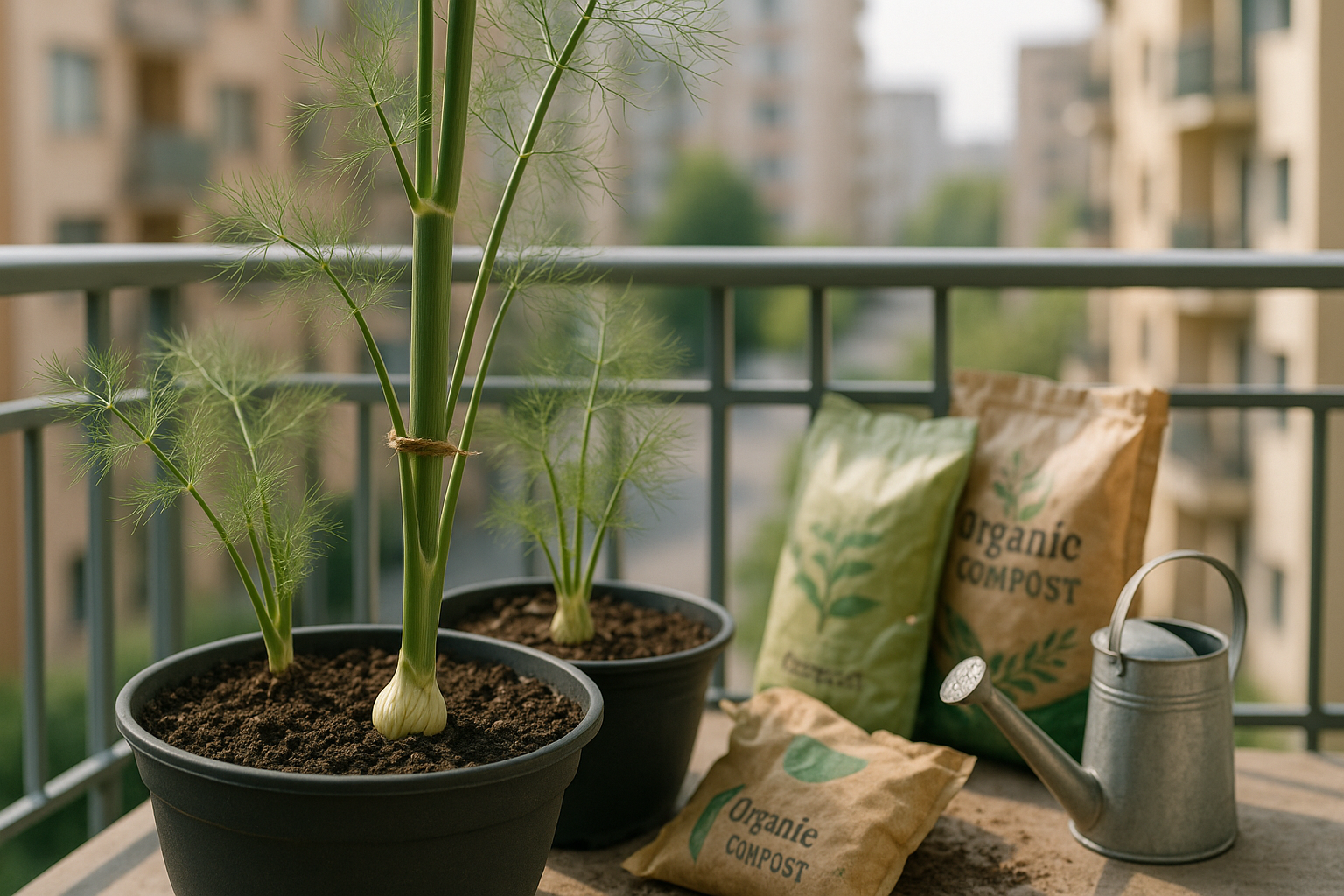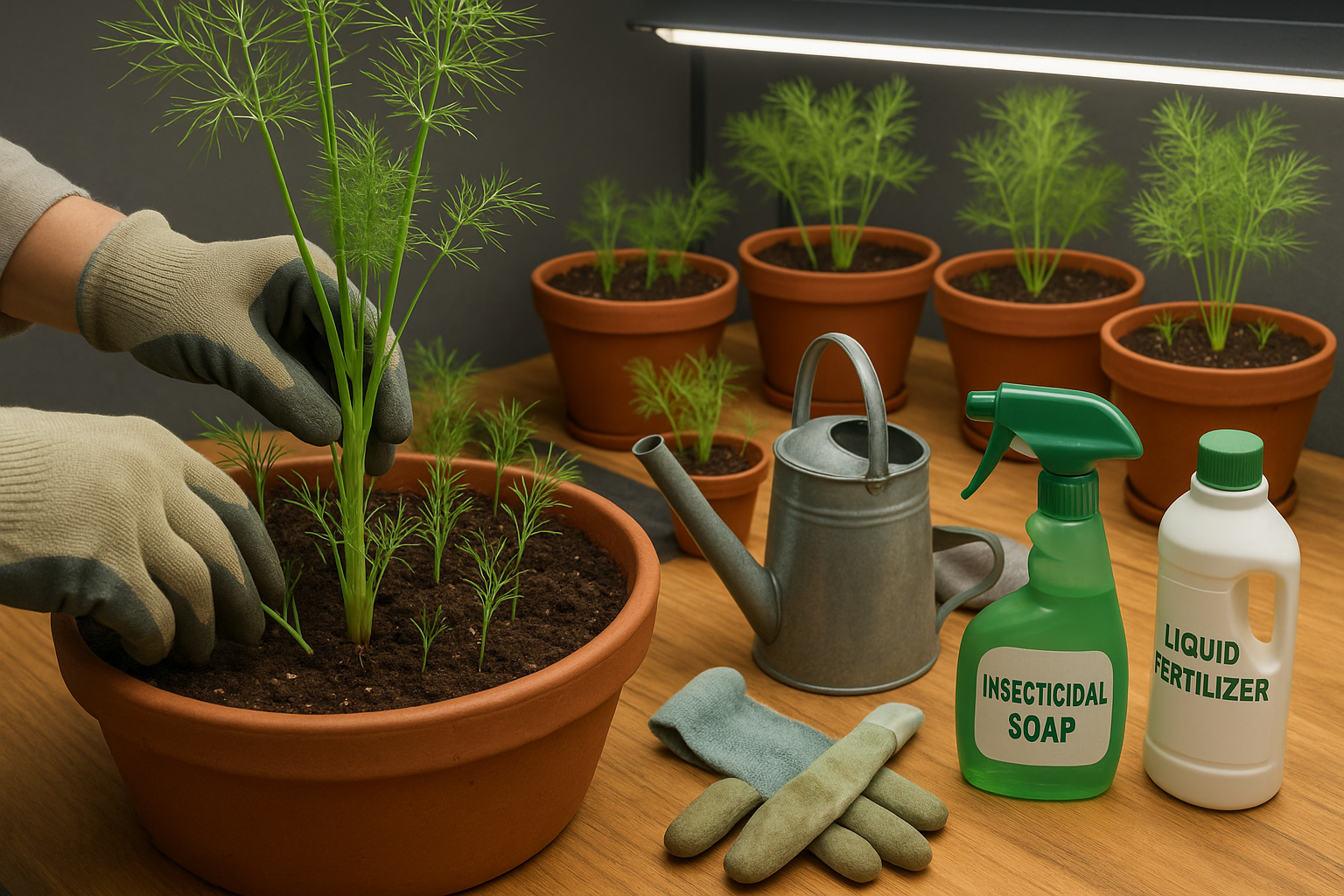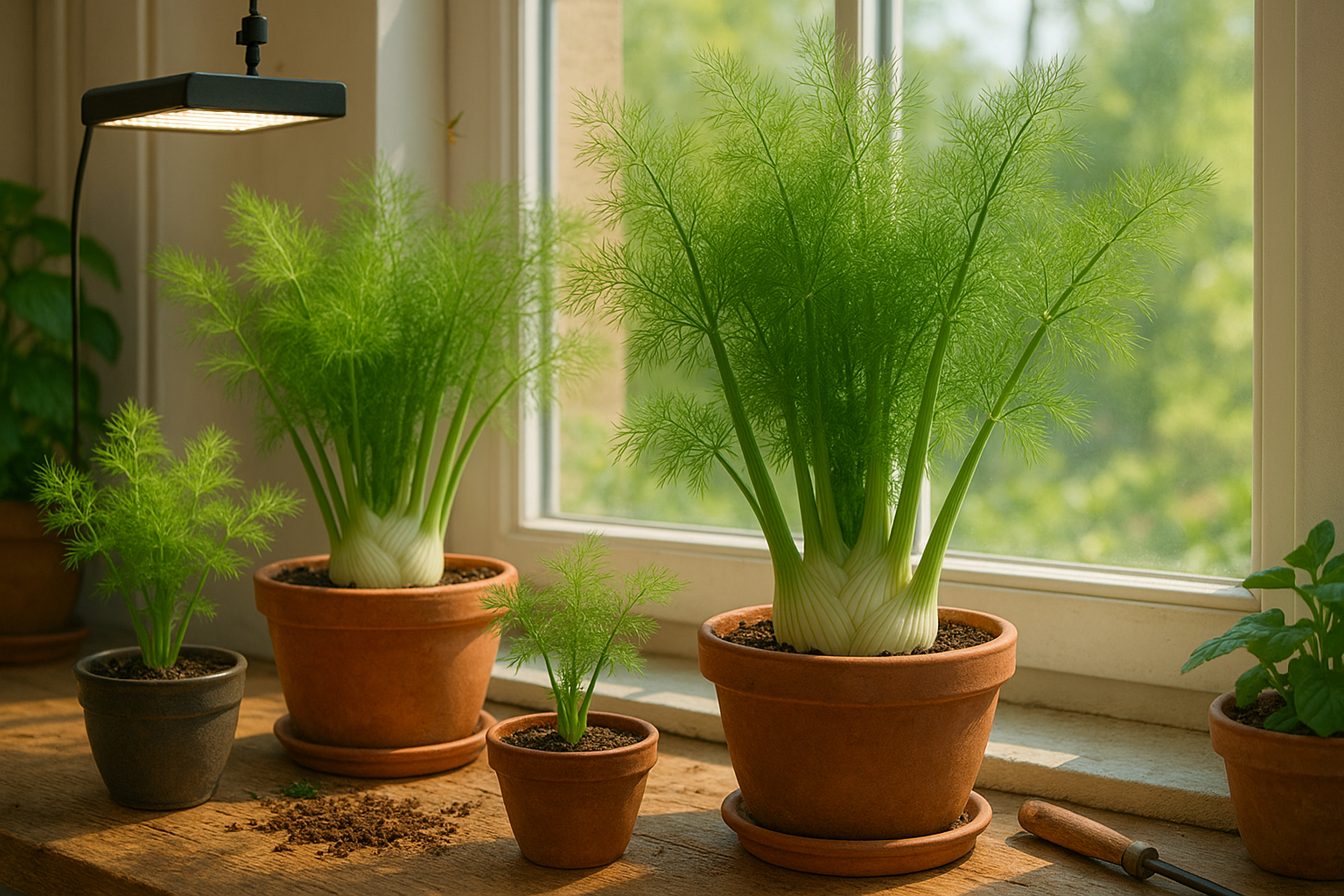Introduction
Growing fennel indoors is a fun way to enjoy this aromatic herb, prized for its unique anise-like flavor and digestive benefits in recipes and traditional remedies. But can you really grow healthy fennel plants inside your home or on a small balcony? In this guide, we’ll show you that growing fennel indoors or in limited outdoor spaces is not only possible but surprisingly simple with the right approach.
We’ll cover everything from choosing the right containers and light sources to practical watering schedules and pest prevention—plus tips for harvesting your homegrown fennel to enjoy fresh salads, teas, or seasonings. Even if you’re short on space or new to indoor gardening, you’ll find easy-to-follow, realistic advice to help you succeed.
Ready to bring the fresh, licorice-scented flavor of fennel right into your kitchen? Let’s get started!
Is Fennel Suitable for Indoor or Balcony Growing?
Fennel, with its feathery fronds and distinct anise scent, can be a rewarding plant to grow indoors or on a balcony if you choose the right variety and conditions.
Herb fennel, grown mainly for its leaves and seeds, is more forgiving in tight spaces and containers. It reaches about 3-4 feet tall and adapts well to large pots. Bulb fennel (Florence fennel), grown for its crisp, flavorful bulb, generally needs more space and does best in deep containers at least 12-14 inches across to accommodate its expanding base.
Both types need full sun for at least 6 hours a day, so a bright, south-facing window or an unobstructed balcony is ideal. Indoors, supplementing with a grow light may be necessary if natural light is limited.
Regular watering is essential, but good drainage is a must to prevent root rot. Space can be a major challenge; fennel tends to grow tall and can flop if crowded, so staking or supports are useful in containers.
Additionally, fennel has a reputation for inhibiting the growth of some companion plants, so it’s best to give it its own pot. With attention to these details, you can enjoy fresh fennel even without a traditional garden.
Choosing the Right Fennel Variety
When selecting fennel for your garden, it’s important to know there are two main types: bulb fennel (often called Florence fennel) and herb fennel (also known as common or sweet fennel). Bulb fennel is grown for its crisp, white, swollen base—perfect for roasting, salads, or grilling. Herb fennel, on the other hand, doesn’t form a bulb but produces fine, feathery leaves ideal for seasoning, along with edible seeds that have a sweet anise flavor.
For small-space or container gardening, choose compact varieties like ‘Perfection’ or ‘Fino’ for bulb fennel, as these tend to have a shorter root system and more reliable bulb formation in pots. Herb fennel can be grown from common fennel seeds and does well in containers, but avoid wild varieties, which can get tall and leggy.
When shopping for seeds, look for packets labeled “compact,” “container suitable,” or “slow bolting” (meaning the plant will resist premature flowering). Check the harvest times and expected plant size, and ensure packet freshness by noting the “packed for” or “sell-by” date. Opting for organic or non-GMO seeds can be a great choice for kitchen gardeners seeking the best-flavored leaves or bulbs from their homegrown fennel.
Setting Up Your Indoor or Balcony Fennel Garden

Starting your own indoor or balcony fennel garden is easier than you might think, as long as you set up the right foundation. For containers, choose pots that are at least 12 inches deep and wide—fennel has a long taproot and needs plenty of room to grow. Make sure your container has good drainage holes to prevent soggy soil, which can cause root rot.
Terra cotta pots are breathable and help excess moisture evaporate, while plastic pots retain moisture longer—select based on your watering habits and climate. Use a light, well-draining potting mix rather than garden soil; commercial vegetable blends work well, or you can create your own by mixing two parts potting soil, one part compost, and some perlite or coarse sand for better drainage.
Fennel loves nutrient-rich soil, so before sowing, incorporate a balanced slow-release fertilizer or mix in a few handfuls of organic compost. Throughout the growing season, feed your plants with a liquid fertilizer every few weeks, especially once they’re well established.
Position your container where fennel can soak up at least 6 hours of direct sunlight daily—a sunny south- or west-facing balcony or windowsill is ideal. If your indoor space lacks natural light, supplement with a full-spectrum LED grow light placed 6–12 inches above the plants; set it on a timer to provide around 12–14 hours of light per day to encourage robust growth. Remember to rotate your pot every week to ensure even exposure.
By choosing suitable containers, prepping nutrient-rich soil, and optimizing your plant’s access to sunlight, you’ll be well on your way to enjoying crisp, aromatic fennel at your fingertips—even in the heart of the city.
How to Sow and Care for Fennel in Containers

Growing fennel in containers is easier than you think, and with a little planning, you can yield beautiful, aromatic bulbs. Start by choosing a deep pot (at least 12 inches deep) to accommodate fennel’s long taproot, and fill it with well-drained, rich potting soil.
Sow seeds about ¼ inch deep and space them 6 to 8 inches apart—this helps bulbs develop properly and prevents overcrowding. Water the container thoroughly after sowing, then keep the soil consistently moist but not soggy.
Since fennel prefers slightly higher humidity and good air circulation, aim to water early in the day so leaves can dry, and avoid placing containers in cramped spaces. Thin seedlings when they reach 2 inches tall, spacing the strongest plants 8 to 12 inches apart for proper airflow and robust bulb growth.
To feed fennel, use a balanced liquid fertilizer every two to three weeks, especially as the bulbs start swelling. Keep an eye on your plants for early signs of bolting (flowering too soon), which is often triggered by heat or irregular watering—shade the pots in extreme heat and maintain steady moisture to help prevent this.
Watch out for common pests like aphids; spray affected leaves with a gentle stream of water or apply insecticidal soap if needed.
With these simple steps and attentive care, your container fennel will thrive, offering you crispy bulbs and feathery fronds for your favorite dishes.
Harvesting Fennel
Harvesting fennel is all about timing and technique, whether you’re growing it in a garden bed or a small container on a balcony. For feathery fennel leaves (also known as fronds), you can begin snipping them when the plant is about 6 inches tall—a little at a time, using clean scissors to encourage more growth. The fronds are best harvested early in the morning for maximum flavor.
Harvesting fennel bulbs requires a bit more patience; wait until the bulbs at the plant’s base are about the size of a tennis ball (usually around 3 inches across) and look plump, white, and unblemished.
Indoors or on a balcony, keep an eye on the plant’s shape—crowding can cause bulbs to remain small or become misshapen. To maximize your yield in limited space, thin seedlings so each plant has at least 8 inches of room to develop big, healthy bulbs. Mulch around the base to retain moisture and consider “blanching” bulbs by gently mounding soil around them as they swell.
Remember, smaller bulbs are often more tender and flavorful than larger ones, so don’t be shy about harvesting early if you prefer a milder taste or need to free up container space for new crops.
Troubleshooting Common Indoor/Balcony Fennel Problems
When growing fennel indoors or on a balcony, gardeners often face issues like aphids or caterpillars munching on leaves, fungal diseases from poor air circulation, and premature bolting caused by excess heat or inconsistent light.
If you spot tiny bugs, a gentle spray of soapy water or neem oil usually keeps pests at bay—just remember to check the undersides of leaves weekly.
Yellowing or moldy foliage often signals too much moisture or crowded pots, so water only when the top inch of soil feels dry, and thin out dense clumps to improve airflow.
Fennel can bolt quickly if exposed to heat spikes or sudden shifts in daylight; use sheer curtains to filter direct sun on hot afternoons, and keep containers in stable, bright-but-cool spots.
If a plant bolts or looks stunted despite your care, don’t hesitate to start anew—harvest what you can and sow fresh seeds, preferably in spring or fall for more manageable temperatures.
Relocating containers as seasons change, or even rotating your pots weekly, helps mimic fennel’s natural habitat and reduces stress.
Regular vigilance, quick interventions, and sometimes knowing when to replant are key to thriving indoor and balcony fennel.
